Crowdsourcing Science Memory Before the Web: 1932, 1969, & Today
In April 1969, Physics Today published a photograph of the American Physical Society’s 1932 banquet
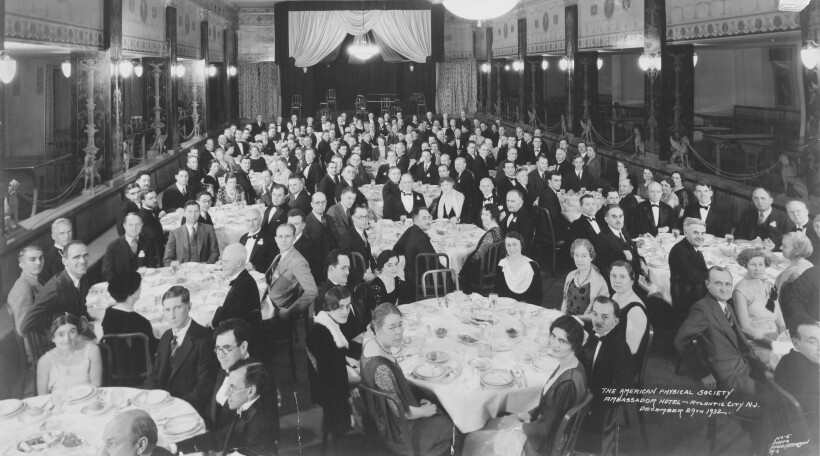
Dinner of the American Physical Society (APS) at the Ambassador Hotel
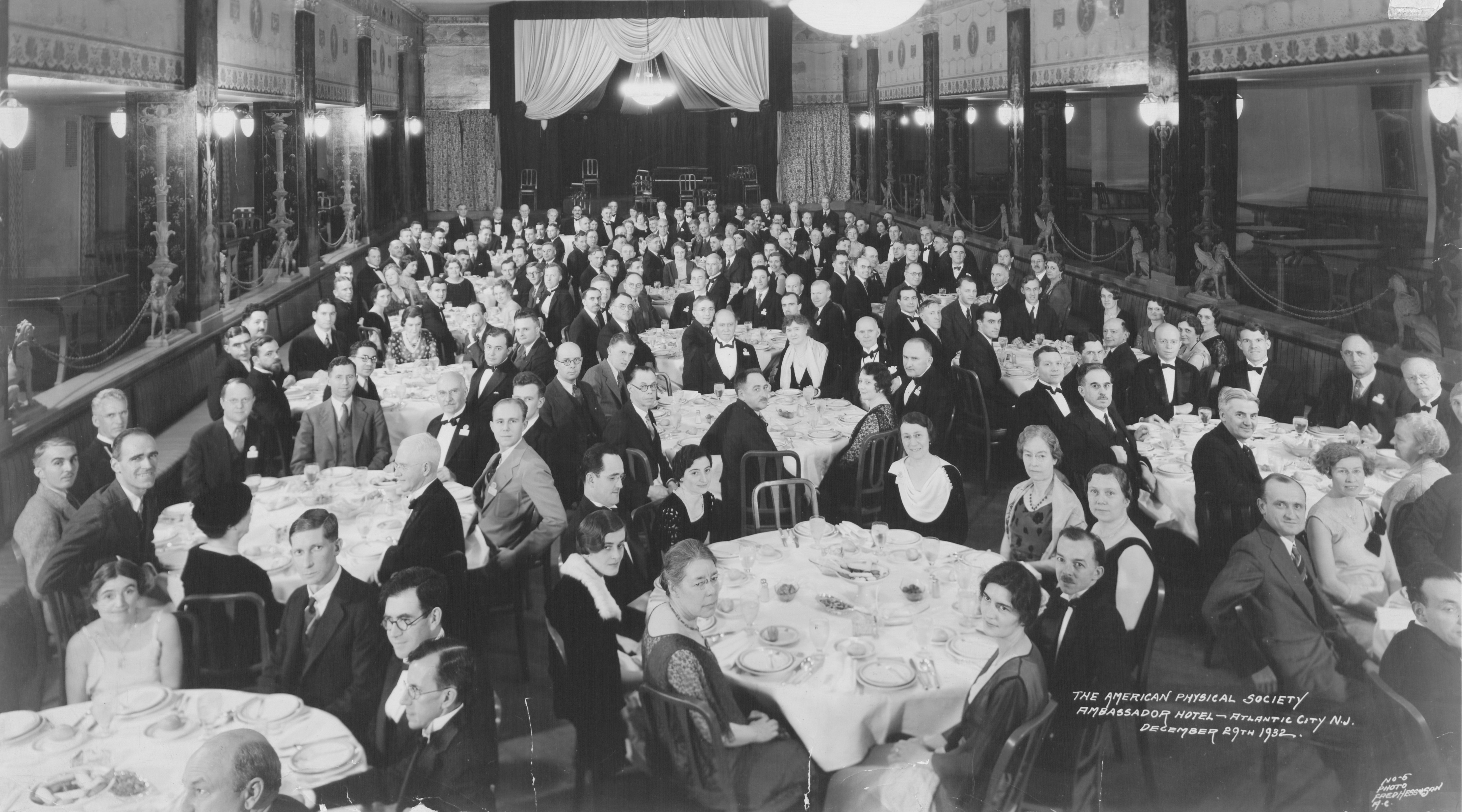
This was more than just a photo caption challenge. It was an ambitious crowdsourcing experiment, decades before the term crowdsourcing came to be. The story of this photo, as documented in AIP’s archives, illustrates something special about the physical science community’s memory practices.
A Chorus of Replies
A wide range of responses flowed into the Physics Today inbox. Some came as formal letters, others as annotated reproductions of the photo or handwritten lists. Together, they illustrate a vibrant network of collective memory, reconstructing not just a list of names but a sense of shared history and memory.
John C. Clark of La Jolla, California, sent a handwritten annotated copy of the article pictured below. He noted that while he hadn’t attended the banquet, he could name many who had. His copy of the article features numbers above various individuals’ heads, matched to a list including R. A. Millikan, I. I. Rabi, John Von Neumann, and Karl Compton.

Photo of John C. Clark’s annotated copy of Physics Today article identifying individuals in the photo. Found in Correspondence - OHO picture contest, 1969, Folder 5, Box 15, American Institute of Physics, Physics Today Division records, 1948-1971
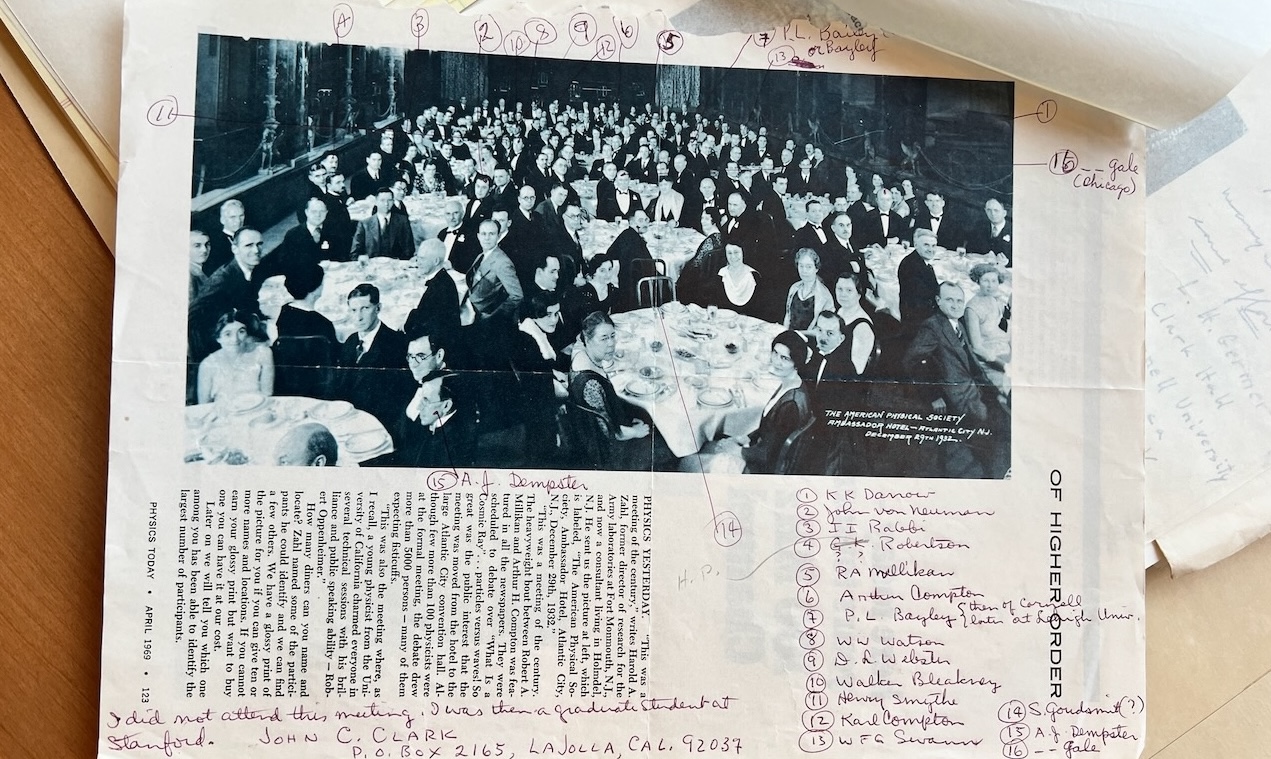
The way people responded to this challenge is in itself indicative of their personalities. G. N. Glasoe, at Brookhaven National Laboratory, wrote to say he “was surprised to be reminded that [he] was present when the photo was taken” and that he tried his luck at identifying the people pictured. Along with the message, he included a typed list of identifications, complete with coordinates in centimeters from the bottom-left corner of the image. There is an element here of a physicist’s sense of precision applied to this fun little activity in historical crowdsourcing.

Photos of two pages from a letter from G. N. Glasoe’s identifying individuals in the photo by x/y coordinates in centimeters. Found in Correspondence - OHO picture contest, 1969, Folder 5, Box 15, American Institute of Physics, Physics Today Division records, 1948-1971
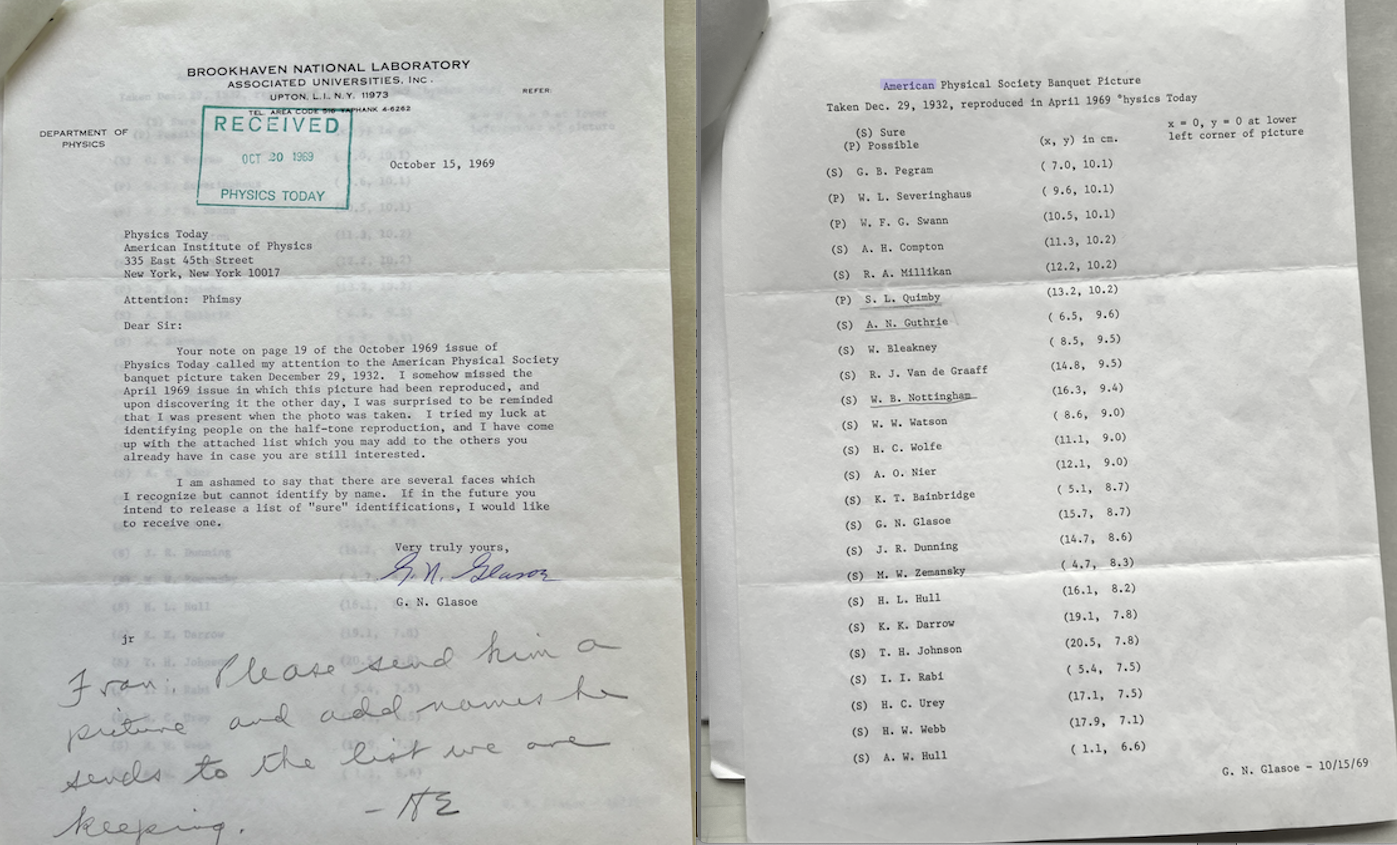
There are other responses from people pictured who shared a bit about their recollections of the event. Ralph Bennett wrote in to identify himself as the “smiling man at the left just under Albert Hull’s chin—still smiling and enjoying life hugely.” Bennett fondly recalled trucking the MIT exhibit to the banquet with colleagues and sleeping in the truck because “$ were short.”

Photo of note about a letter from Ralph Bennett found in Correspondence - OHO picture contest, 1969, Folder 5, Box 15, American Institute of Physics, Physics Today Division records, 1948-1971
Reed Hobart Ellis Jr, then editor of, Physics Today, wrote back to thank Bennett for the letter, noting that he intended to reproduce it in the magazine. In this way, some of the stories shared made their way back into the magazine and also into AIP’s archives.

Photo of letter from R. Hobart Ellis Jr to Ralph D Bennett, 30th October, 1969. Found in Correspondence - OHO picture contest, 1969, Folder 5, Box 15, American Institute of Physics, Physics Today Division records, 1948-1971
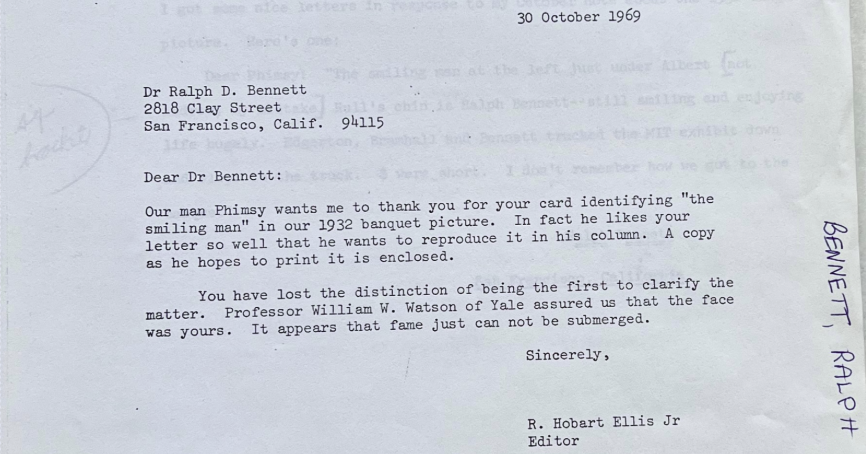
AIP’s Archives are our Community’s Archives
These responses now live in the collections of AIP’s Niels Bohr Library & Archives

Photos of box 1 and 15 from the American Institute of Physics, Physics Today Division records, 1948-1971
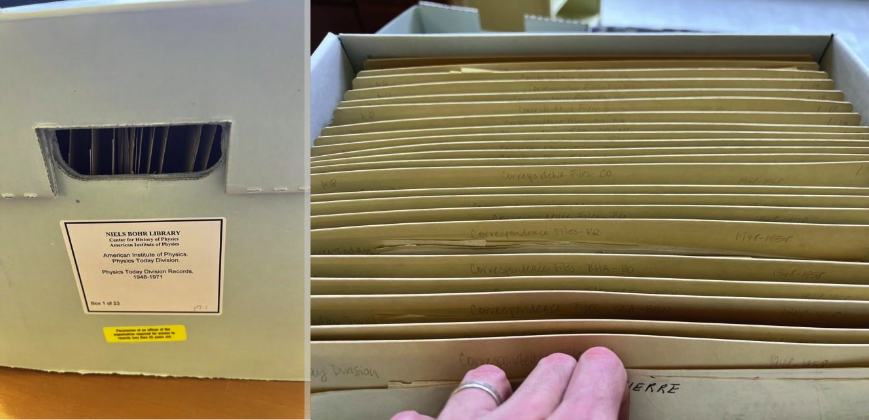
This small sample of one of our many collections showcases how AIP’s Niels Bohr Library & Archives is more than a repository. Through publications like Physics Today, AIP supports an ongoing dialog with the physical sciences community. Some of that shows up in the pages of the magazine, but the rest of it ultimately makes its way into our archives. In the archives, these records persist forward as resources for all of us, and for historians and science writers of the future, to explore. They offer us an opportunity to understand how science happens and the people who make science happen.
This story reminds us that archives don’t just preserve the past: they are built by people who care enough to remember, to write, to annotate, to share. If you have personal recollections, photographs, memoirs, or correspondence related to the physical sciences community, we invite you to consider contributing to the Niels Bohr Library & Archives. Every name recalled, every note in the margins, every personal recollection adds depth to the historical record. To that end, we invite you to help us continue this tradition of collaborative memory-making. You can be part of the next chapter, just as those readers were in 1969.




